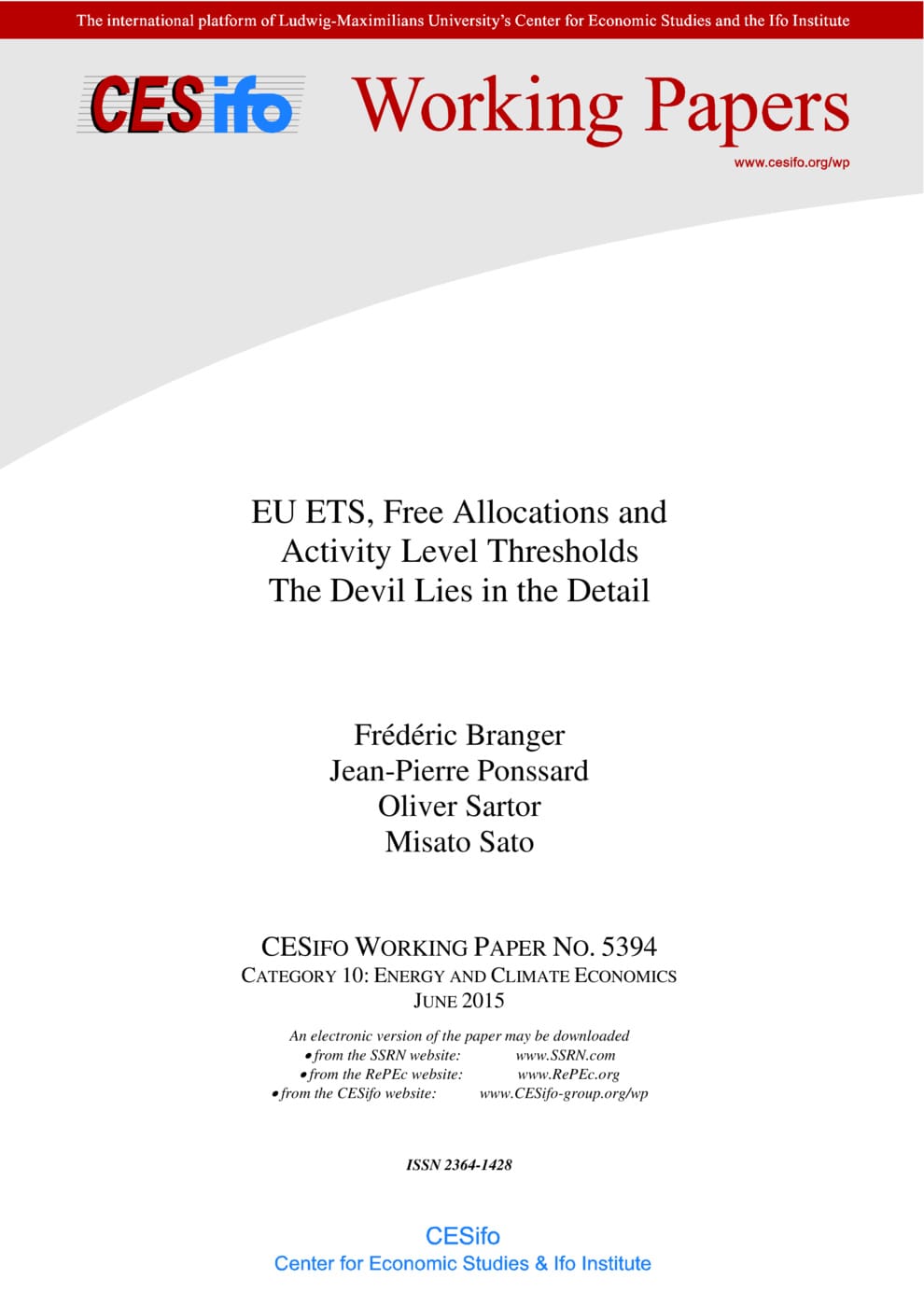EU ETS, Free Allocations and Activity Level Thresholds - The Devil Lies in the Detail
CESifo, Munich, 2015
CESifo Working Paper No. 5394

This paper investigates incentives for firms to increase output above the activity level thresholds (ALTs) in order to obtain more free allowances in the EU Emissions Trading Scheme. While ALTs were introduced in order to reduce excess free allocation to low-activity installations, for installations operating below the threshold, the financial gain from increasing output to reach the threshold may outweigh the costs, particularly in carbon intensive sectors with a high carbon to production costs ratio. Using installation level data for 246 clinker plants, we estimate the effect of ALTs on output decisions. In 2012, ALTs induced 6.4Mt of excess clinker production (5% of total EU output), which corresponds to 5.8Mt of excess CO2 emissions (over 5% of total sector emissions). As intended, ALTs do reduce overallocation (by 6.4 million allowances) relative to a scenario without ALTs, but this gain is small compared to an output based allocation method, which would further reduce overallocation by 40 million allowances (29% of total cement sector free allocation). Firms responded disproportionately to ALTs in crisis-hit countries with low demand, especially in Spain and Greece. The excess clinker output lead to increased EU clinker and cement exports, production shifting between plants and also an increase in clinker content of cement thus reducing the carbon efficiency of cement production.
Energy and Climate Economics